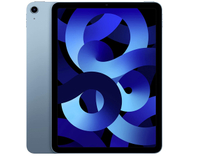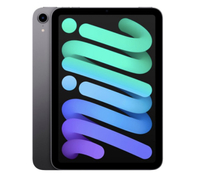We’ve heard again recently that Apple’s likely going all-in on OLED iPads in 2024, based on its components partner Samsung Display ramping up its production facilities (via The Elec (opens in new tab)), and other recent claims from analysts like Ross Young and Ming-Chi Kuo. A newer report suggests Apple will utilize hybrid OLED tech for iPads coming in 2024. Apple already offers OLED displays on the iPhone 13 series and the Apple Watch 7, but it’s yet to offer them on a tablet. The first OLED iPads will likely be a future iPad Pro, building on the current mini LED display in the 12.9-inch iPad Pro. However, with the above report mentioning second-gen OLED iPads coming in the same year, it seems likely that this technology would eventually appear on the iPad Air, and possibly trickle down to the iPad mini and regular iPad eventually. With the iPads already occupying several spots on our best tablets guide, how would the addition of OLED screens make them better? We explore that below, as well as consider why it may be better to go for a new iPad now instead.
The best iPad to buy right now
The best iPad bargain right now
The OLED advantage
To break down our overall what is OLED guide, OLED displays are an improvement on regular LCD displays because they’re more power-efficient for their size, and offer better contrast and increased responsiveness. These are both because OLED panels can turn off pixels individually to display “true black,” which backlit LCD screens can’t manage. This is also handy for always-on displays, making sure they can be used efficiently without turning on the whole screen. Those are the general benefits of using OLED. However, Apple’s OLED panels may also offer increased brightness, according to a report from last year about plans for “double-stacked” OLEDs. There aren’t many OLED tablets around, but currently you can find OLED displays on the Samsung Galaxy Tab S8 Ultra and Galaxy Tab S8 Plus. These both show off all the benefits we mentioned above, showing off your content with vibrant colors, and offering always-on displays to show the time or other widgets if you wish. So put simply, an OLED iPad would be an overall boost to the current range. But there are still reasons to avoid it.
Why OLED iPads may not be worth the wait
First off, there’s a year and change wait from now until 2024. We could see some new iPads arrive at Apple’s usual spring product event that year, or at WWDC in the summer. But it’s also possible that we don’t hear about new iPads until the fall of that year, meaning a wait of over two years. This might not be a problem for you, since you may not be looking to upgrade ASAP. But if you do feel like your iPad’s getting old and slow, committing to another two years with it might cause more irritation than it’s worth. Also, there are some limitations to using OLED displays over LCD. For example, while OLED has an advantage in efficiency when displaying blacks, it’s less efficient when displaying brighter images, especially all-white ones like you may find on web browsers or word processors. They can also be dimmer than LCD panels, as we saw when comparing the Galaxy Tab S8 Ultra to the iPad Pro. This would make the Tab S8 Ultra harder to view in bright light, annoying if you want to use it under harsh office lighting or outdoors on a sunny day. We’ll have to wait and see in our eventual review testing if Apple can manage to keep these problems to a minimum, if it is indeed working on OLED iPads. But it’s possible that the iPads using this technology could take a dive in battery life compared to previous generations, which could prove a nuisance to the most demanding users. Be aware also that adding an OLED display could merit a price hike, since OLED screens cost more to make and buy than LCD screens. Hopefully, we’re no longer experiencing major inflation and a cost of living crisis in 2024, which would make spending money on premium goods like new iPads an easier outlay to justify. That cost could end up being quite a bit higher than buying an equivalent model today though, and we don’t know if there would be any other benefits to help justify the additional cost.
Final thoughts
Adding OLED displays would seem like a great way to move the iPad family forward and maintain their lead over the best Android tablets. It would help Apple’s tablets match up to the best from brands like Samsung, by boosting their color and contrast, and possibly enable always-on displays for additional utility. But there’s a price attached to new technology, both figuratively and literally. You’ll likely have to pay extra to offset the higher component cost of OLED display panels, plus OLED isn’t guaranteed to be brighter or more efficient than LCD under all circumstances. What’s more, that two-year wait may be too long for you to want to stick with your current tablet, and a more immediate upgrade would suit your needs better. While we’re looking forward to these rumored OLED iPads, we don’t think it’s a reason for most buyers to ignore the current and upcoming range of iPads, which already do their job excellently working off of LCD (or mini LED) displays. If you’re adamant about getting an OLED device to watch your content right now, then look at the Galaxy Tab S8 Plus or Tab S8 Ultra, or forget about tablets altogether and look for the best laptops or best monitors that use the technology. If you’ve decided an immediate iPad upgrade is the best decision for you, take a look at the best iPads currently available. If you’re prepared to wait a bit, read our iPad Pro 2022, and iPad 2022 rumor hubs to see what’s likely in store for the next generation of these iPads.






